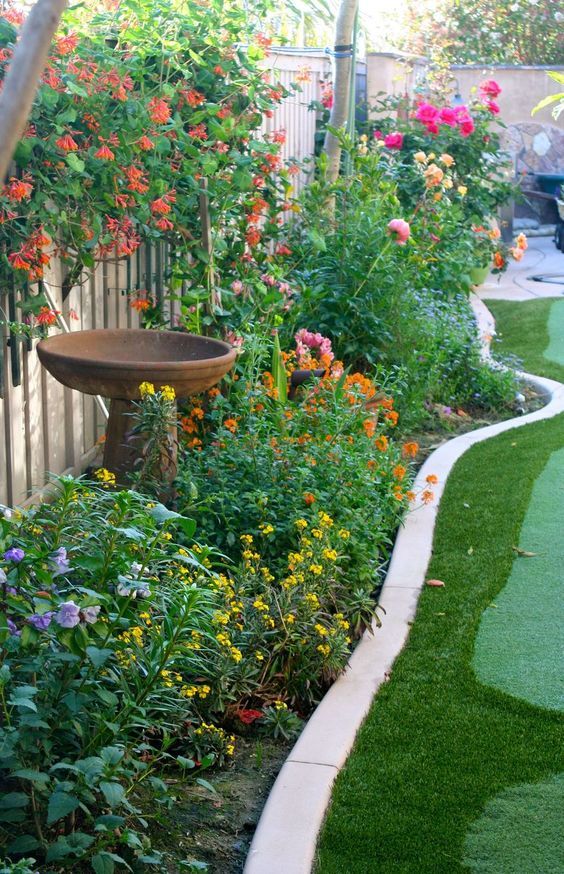Prevent plants from freezing
Frost Covers & Cold Snap Care
Whether you fell under the spell of some eye-catching color at the garden center or just wanted to get a jump on the gardening season, planting too early can create a crisis when a cold snap threatens. Helping your seedlings survive the big chill isn't impossible, but it does require some preparation.
In most cases, you can count on makeshift methods to protect plants when the thermometer dips. But for larger plantings, such as a vegetable garden, you'll need to arm yourself ahead of time with the right gadgets to guard plants against frosty mornings.
Know The Limits
In order to understand what steps to take when freeze warnings threaten, you need to know the point at which treasured greenery fades to frost-burned brown. The general rule of thumb is that most plants freeze when temperatures remain at 28°F for five hours.
Of course, there are exceptions to this rule. Seedlings, with their tender new leaves, often give up the ghost when temperatures dip to 32-33°F. Tropical plants have differing low-temperature thresholds. Some keel over when temps fall to 40°F; others crumble at 35°F. Other plants are just hardy by nature and can withstand temperatures as low as 18-20°F. To find the threshold for your plants, search garden books and online resources.
Quick Fixes For Frost Warnings
Pick It Up – The easiest cold-protection scheme is to move plants out of harm's way. This works with seedlings in flats and potted plants. Moving plants under a deck, into a garage or shed, or onto a porch with a roof often offers ample protection.
Count On Water – Water soil just before sundown to raise overnight air temperature around plants as the water evaporates. Fill gallon jugs or buckets with water and place them in the sun during the day. At night, move them near endangered plants. The water will moderate air temperatures; if it freezes, it will release heat. For greatest effect, paint a few water-holding containers black to maximize daytime heating.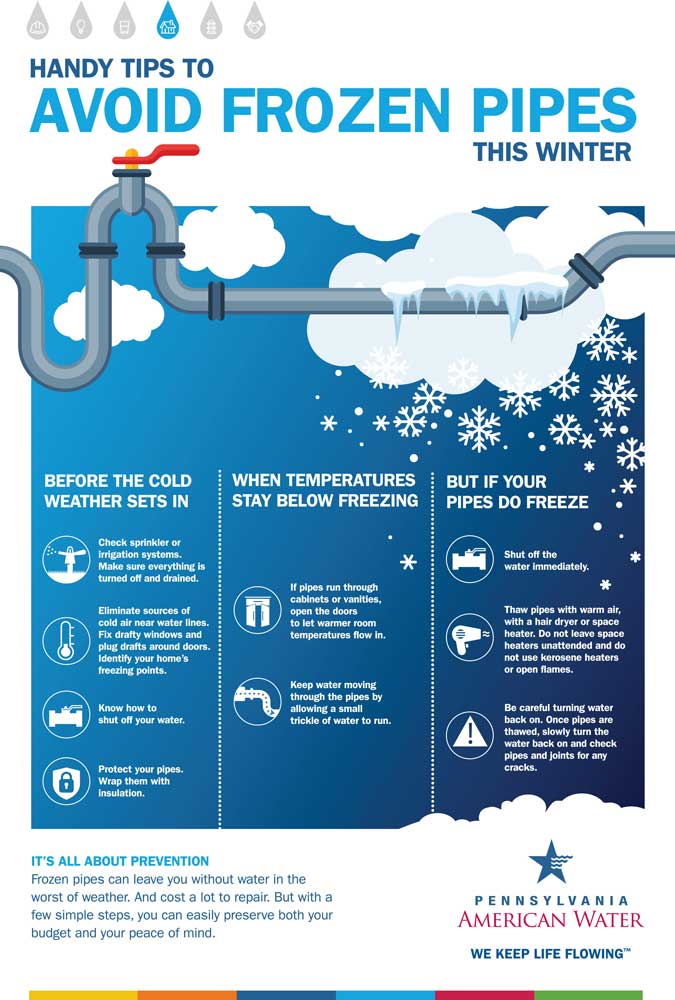
Keep Air Moving – Cold, still air does the most damage to plants. Stir a breeze all night with an electric fan to keep frost from forming on plants. Remember to protect electrical connections from moisture.
Cover Plants – Protect plants from all but the hardest freeze (28°F for five hours) by covering them with sheets, towels, blankets, cardboard or a tarp. You can also invert baskets, coolers or any container with a solid bottom over plants. Cover plants before dark to trap warmer air. Ideally, coverings shouldn't touch foliage. Anchor fabric coverings if windy conditions threaten.
In the morning, remove coverings when temperatures rise and frost dissipates. Heat from the sun can build beneath solid coverings, and plants can die from high temperatures.
Break Out Blankets – Keep gardening blankets, often called row covers, on hand. These covers are made from synthetic fibers or plastic in varying thicknesses. Lay row covers directly on plants, or create a tunnel by suspending them over a bed using stakes.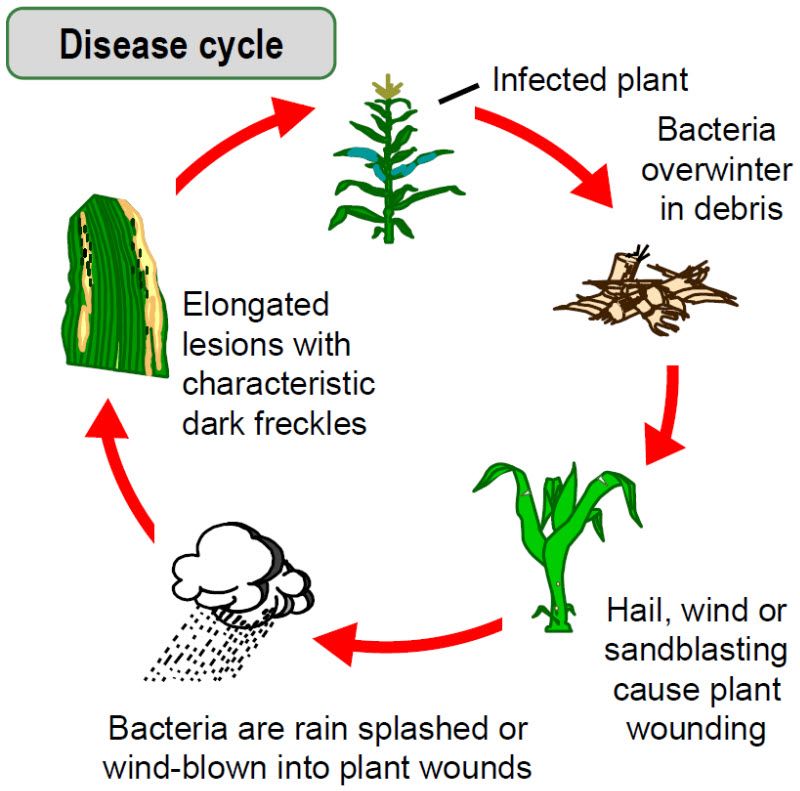
Turn On Lights – An incandescent light bulb generates sufficient heat to raise nearby air temperature enough to protect a plant from the deep freeze. Bulbs must be close to plants (within 2-3 feet) for this technique to work. (Fluorescent bulbs don't generate enough heat for this chore.)
Protect Individual Plants – Install hot caps – rigid plastic containers with venting holes – over individual seedlings at planting time. Hot caps act like cloches (mini greenhouses), but venting holes eliminate the daily chore of placing and removing the covering. Create the equivalent of a hot cap using plastic two-liter bottles or gallon jugs with bottoms cut off and lids removed (but saved). Replace lids at night when cold temperatures swoop through.
A twist on the hot cap idea is a Wall O'Water tepee, which encircles individual plants with a sleeve of water-filled tubes. The water absorbs the sun's heat during the day. At night, as the water slowly freezes, it releases the stored radiant heat of the sun, keeping air inside the tepee frost-free.
More Lawn Solution Articles for You
Winter Garden Checklist For Mild Climates
Winter garden checklist during mild climates. Winter doesn't signal the end of gardening season. There is many chores such as planting,...
read more
How To Prepare Your Garden For Frost
If winter is coming soon, this simple to-do list will help you prepare your garden for frosty weather, from harvesting, to draining hoses to...
read more
Planting After Danger Of Frost
For a successful spring planting, be aware of the danger of frost. It can kill young seedlings. Knowing the last frost date in your area can...
read more
Copyright © 2022 bioadvanced.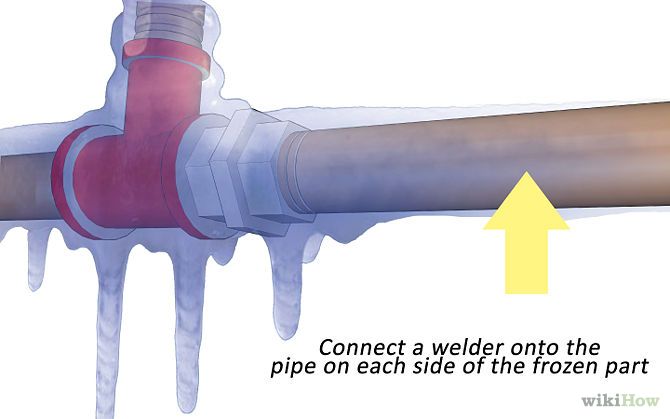 com All Right Reserved.
com All Right Reserved.
Best Way To Cover And Keep Plants From Freezing
Home › Problems › Environmental Problems
Environmental Problems
By: Heather Rhoades
Image by travelview
Gardeners plant flowers, shrubs and trees that can survive in their garden during typical weather. But what can a gardener do when the weather is anything but typical? Unexpected freezes can devastate landscapes and gardens. They can leave a gardener wondering how to protect plants from freezing, and question what is the best way to cover and keep plants from freezing.
At What Temperature Do Plants Freeze?
When cold weather comes your way, your first thought will be at what temperature do plants freeze, in other words, how cold is too cold? There is no easy answer to this.
Different plants freeze and die at different temperatures. That is why they are given a hardiness rating. Some plants produce special hormones that keep them from freezing, and these plants have a lower hardiness rating (meaning they can survive colder weather) than plants who produce less of this hormone.
That being said, there are also different definitions of survival. A plant may lose all its foliage during a freeze, and some can regrow from the stems or even the roots. So, while the leaves cannot survive a certain temperature, other parts of the plant can.
How to Protect Plants from Freezing
If you are only expecting a light freeze, you may be able to protect plants in a freeze simply by covering them with a sheet or a blanket. This acts like insulation, keeping warm air from the ground around the plant. The warmth may be enough to keep a plant from freezing during a short cold snap.
For added protection when you protect plants in a freeze, you can place plastic over the sheets or blankets to help keep warmth in. Never cover a plant with just plastic, however, as the plastic will damage the plant. Make sure that a cloth barrier is between the plastic and the plant.
Be sure to remove the sheets and blanket and plastic first thing in the morning after an overnight cold snap. If you do not do so, condensation can build up and freeze again under the covering, which will damage the plant.
If you do not do so, condensation can build up and freeze again under the covering, which will damage the plant.
When protecting plants in a freeze that’s longer or deeper, you may have no choice but to expect to sacrifice all or part of the plant in hopes that the roots will survive. Start by heavily mulching the roots of the plant with either wood mulch or hay. For added protection, you can nestle gallon jugs of warm water into the mulch each night. This will help drive off some of the cold that can kill the roots.
If you have time before a freeze happens, you can also create insulation barriers around a plant as a way how to protect plants from freezing. Tie up the plant as neatly as possible. Drive stakes that are as tall as the plant into the ground around the plant. Wrap the stakes in burlap so that the plant appears to be fenced in. Stuff the inside of this fence with hay or leaves. Again, you can place milk jugs of warm water on the inside, at the base of this fence each night to help supplement the heat.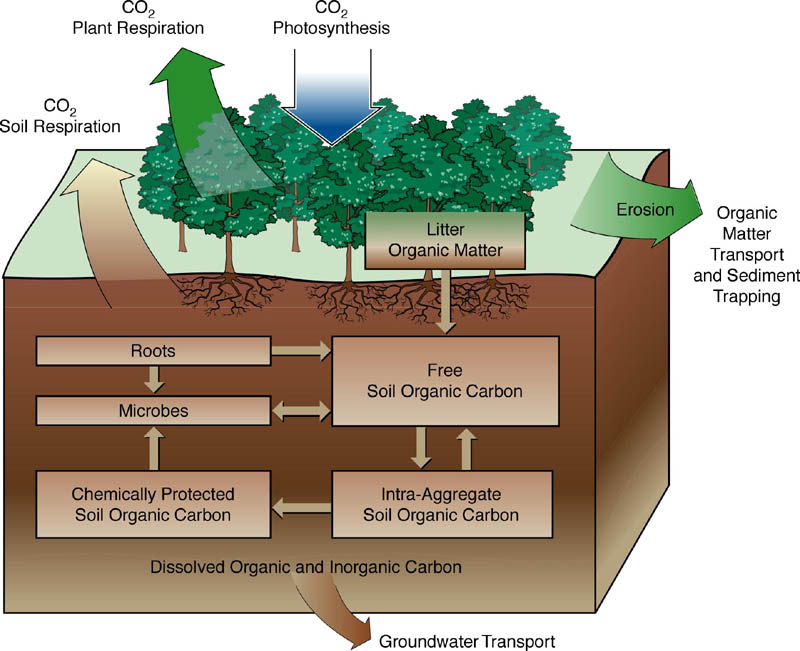 A string of Christmas lights wrapped around the plant can also help add additional heat. As soon as the freeze passes, remove the covering so that the plant can get the sunlight it needs.
A string of Christmas lights wrapped around the plant can also help add additional heat. As soon as the freeze passes, remove the covering so that the plant can get the sunlight it needs.
Watering the soil (not the leaves or stems of the plants) will also help the soil retain heat and can help the plant’s roots and lower branches survive.
This article was last updated on
Read more about Environmental Problems
Did you find this helpful? Share it with your friends!
You might also like…
How to protect plants from freezing and increase winter hardiness?
Publication date: 08/10/2019 11:21
Ivan Bezrukov, a leading specialist at the Biolit company's Winter Garden nursery, tells how to protect plants from freezing and increase winter hardiness.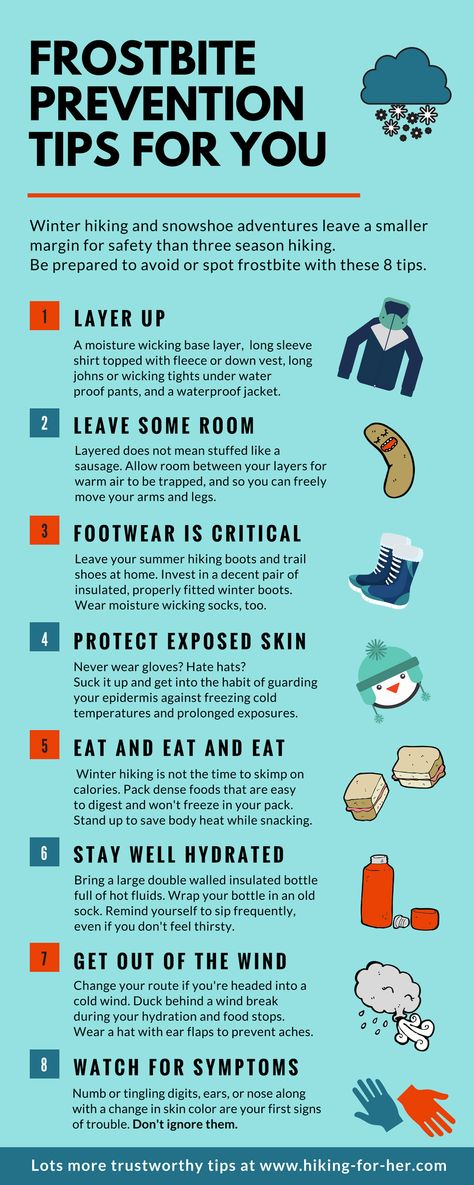 Altai.
Altai.
Many gardeners have faced the problem of freezing of annual shoots of flower buds in winter and, as a result, a decrease in yield. This problem has a solution. One manufacturer of plant protection products offers cryoprotectant Purshat-K - a preparation for protecting annual shoots and flower buds from freezing and extremely low temperatures.
Purshat-K is an emulsion of silicic acids. When applied to shoots and buds, it forms a film that prevents plants from losing water during the winter physiological drought.
To treat a garden plot, dilute half a liter of concentrated emulsion in 10 liters of water. This amount of working solution is enough to process 300 square meters of tree crown area. nine0003
Purshat-K - cryoprotectant for protecting fruit and ornamental plants from critical low temperatures, increasing winter hardiness of plants, freezing of annual growth, flower buds.
Purpose: protection of fruit and ornamental plants from low temperatures by increasing the maximum allowable winter temperatures by 10°C drought, preventing dehydration of the annual growth of branches and buds. PEG-glycerol (400), polysaccharides and amino acids, penetrating into plant tissues, increase the concentration of cell sap, bind free water, strengthen intercellular membranes, and reduce the freezing point of water in plant cells and tissues. nine0003
PEG-glycerol (400), polysaccharides and amino acids, penetrating into plant tissues, increase the concentration of cell sap, bind free water, strengthen intercellular membranes, and reduce the freezing point of water in plant cells and tissues. nine0003
Result: increase the winter hardiness of perennial plants in adverse climatic conditions, by 10 gr. C from the maximum allowable temperatures.
It is a water-soluble emulsion concentrate, weight 1140 grams, volume 1 liter, for preparing 20 liters of working solution, for 300-600 sq. meters of tree crown area.
Composition: Silicate. gels of salts of silicic acids of sodium and potassium E550, E560, urea E927b, potassium carbonates E501 and magnesium E504; propylene glycols: glycerin E422, polysaccharides E466, E 412, bactericide E211, distilled water. nine0003
Application: Before use, mix the contents of the vial thoroughly, dissolve in a small amount of hot water, bring to a volume of 20 liters! A preparation for the treatment of fruit, ornamental trees and shrubs (with a maximum permissible winter temperature for varieties and species of -20°C) is prepared as follows. The contents of the vial, the cryoprotector concentrate, are dissolved in 20 liters of water, avoiding the formation of lumps. With the resulting preparation (with stirring, avoiding the formation of sediment), spray the stems of the branches and buds of plants by spraying. Apply the protective composition of the preparation at positive temperatures during the daytime and in the absence of precipitation within 48 hours. Estimated consumption: 9-10 liters of the drug solution per 200 sq. meters of fruit crop crown area and 8-9 liters of solution per 400 sq. meters of grape crown area. Within 48 hours, a porous polymeric film is formed from the applied preparation, which can then be visually (or under a magnifying glass) observed in the form of a slightly shiny coating. The maximum permissible winter temperature of fruit crops and grapes is increased by 10°C due to the treatment with the preparation. The film in the field conditions of a garden or vineyard (illumination, wind, precipitation) retains mechanical stability for up to 3 months.
The contents of the vial, the cryoprotector concentrate, are dissolved in 20 liters of water, avoiding the formation of lumps. With the resulting preparation (with stirring, avoiding the formation of sediment), spray the stems of the branches and buds of plants by spraying. Apply the protective composition of the preparation at positive temperatures during the daytime and in the absence of precipitation within 48 hours. Estimated consumption: 9-10 liters of the drug solution per 200 sq. meters of fruit crop crown area and 8-9 liters of solution per 400 sq. meters of grape crown area. Within 48 hours, a porous polymeric film is formed from the applied preparation, which can then be visually (or under a magnifying glass) observed in the form of a slightly shiny coating. The maximum permissible winter temperature of fruit crops and grapes is increased by 10°C due to the treatment with the preparation. The film in the field conditions of a garden or vineyard (illumination, wind, precipitation) retains mechanical stability for up to 3 months. It is destroyed naturally in the spring at the beginning of sap flow in plants. nine0003
It is destroyed naturally in the spring at the beginning of sap flow in plants. nine0003
Important: Do not use on vegetative plants! It is necessary to ensure regular mixing during the preparation of the solution, and during processing. If you use a sprayer without an air blower agitator, such as a hand or backpack sprayer, to treat your plants, you will need to shake it periodically to agitate the emulsion. Precipitation is allowed.
Crop: Fruit trees, shrubs, ornamental plants with low winter hardiness -20, -25 ºС. nine0038 Purpose of application: Increase in winter hardiness, from maximum permissible temperatures
Terms and number of treatments: Autumn treatment of trunks, branches, shoots and buds.
Crop: Fruit trees, shrubs, ornamentals, plants with low winter hardiness.
Purpose of application: Protection of shoots and flowers from spring frosts by delaying the dissolution phase for 10-14 days.
Terms and number of treatments: In the spring in March, the first decade of April, before bud break, before the green cone phenophase, to delay the dissolution phase and protect against return frosts. nine0003
nine0003
The preparation is not dangerous for bees, insects and warm-blooded animals.
The technical result of using the proposed method for processing fruit crops and grapes is to increase the maximum allowable winter temperature to 10°C for a given crop due to the formation of a microporous polymer film on the surface of the plant bark that is resistant to environmental influences.
The technical result is achieved due to the fact that in the method of treating wood of fruit trees, grapes, ornamental deciduous trees and shrubs from freezing with a sharp drop in temperature in the winter or preventing damage to fruit buds during early spring frosts, a preparation solution is prepared and the treatment is carried out by spraying silicate. silicon gel containing a catalyst and a thickener, which is the basis for the formation of a polymer porous film that provides protection from low winter temperatures (drying of the buds and young growth) and spring frosts, while the treatment with an aqueous emulsion of the drug is carried out in the absence of leaves and the dormant state of plants, with positive temperatures in the daytime and no precipitation for 48 hours, in the conditions of the Krasnodar Territory - early to mid-December, with protection from early spring frosts - at the beginning of bud break to the "green cone" phenophase. nine0003
nine0003
The advantages of Purshat cryo protector are that it provides an effective protective coating of the wood of fruit trees and grapes, protecting it from freezing, freezing out of moisture) at low temperatures in the winter period or preventing damage to fruit buds during early spring frosts, prevents the plant from awakening during provocative thaws in January or February. Delays premature vegetation in early spring for up to 14 days. The preparation used, which contains a catalyst and is the basis for the formation of a porous polymer film, does not require special processing equipment, is non-toxic, non-flammable, odorless, and remains stable throughout the winter period. nine0003
The use of Purshat cryo protector Winter allows you to achieve the desired technical result - to increase the winter hardiness of wood of garden trees and grapes, to protect against freezing in winter or to prevent damage to fruit buds during early spring frosts, superior in its characteristics to the system of protection against low temperatures in spring or winter period, made according to the prototype method.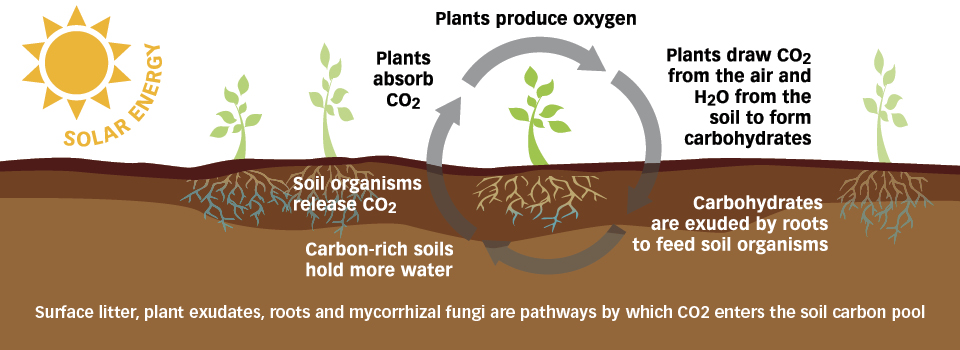
Frost resistance of plants: how to prevent freezing? nine0001
Frost resistance - the ability of plants to tolerate temperatures below 0°C, low negative temperatures. This ability is determined by the hereditary basis of a given plant species, however, the frost resistance of one and the same plant depends on the conditions preceding the onset of frost, affecting the nature of ice formation. Ice can form both in the cell protoplast and in the intercellular space. Not all ice formation causes plant cells to die.
A gradual decrease in temperature at a rate of 0.5-1°C/h leads to the formation of ice crystals, primarily in the intercellular spaces, and initially does not cause cell death. However, the consequences of this process can be detrimental to the cell. The formation of ice in the protoplast of the cell, as a rule, occurs with a rapid decrease in temperature. Coagulation of protoplasmic proteins occurs, cell structures are damaged by ice crystals formed in the cytosol, cells die. Plants killed by frost after thawing lose turgor, water flows out of their fleshy tissues. nine0038 Ice formed during slow freezing in the intercellular spaces and cell walls draws water from the cells; cell sap becomes concentrated, the pH of the medium changes. The crystallized ice acts like dry air, drying out the cells and greatly altering their osmotic properties. In addition, the cytoplasm is subjected to compression by ice crystals. The resulting ice crystals displace air from the intercellular spaces, so the frozen leaves become transparent.
Plants killed by frost after thawing lose turgor, water flows out of their fleshy tissues. nine0038 Ice formed during slow freezing in the intercellular spaces and cell walls draws water from the cells; cell sap becomes concentrated, the pH of the medium changes. The crystallized ice acts like dry air, drying out the cells and greatly altering their osmotic properties. In addition, the cytoplasm is subjected to compression by ice crystals. The resulting ice crystals displace air from the intercellular spaces, so the frozen leaves become transparent.
If little ice is formed and the cells are not mechanically damaged by its crystals, then such plants may remain viable upon subsequent thawing. So, in cabbage leaves at a temperature of -5 ... -6 ° C, a certain amount of ice is formed in the intercellular spaces. However, during subsequent slow thawing, the intercellular spaces are filled with water, which is absorbed by the cells, and the leaves return to their normal state. nine0038 However, cells, tissues and plants can die from frost. The main causes of plant cell death at low negative temperatures and ice formation are excessive dehydration of cells or mechanical pressure, compression of cells by ice crystals, which damages thin cellular structures. Both of these factors can act simultaneously. The lethality of the action of frost is determined by several circumstances. The consequences of exposure to low negative temperatures depend on the water content of plant tissues. Tissues saturated with water are easily damaged, while dry seeds can endure deep low temperatures (up to -196°C). The low water content prevents the formation of ice in plants during freezing. Different plants and their cells have their own critical limit of dehydration and contraction, exceeding which, and not just lowering the temperature, leads to their death.
The main causes of plant cell death at low negative temperatures and ice formation are excessive dehydration of cells or mechanical pressure, compression of cells by ice crystals, which damages thin cellular structures. Both of these factors can act simultaneously. The lethality of the action of frost is determined by several circumstances. The consequences of exposure to low negative temperatures depend on the water content of plant tissues. Tissues saturated with water are easily damaged, while dry seeds can endure deep low temperatures (up to -196°C). The low water content prevents the formation of ice in plants during freezing. Different plants and their cells have their own critical limit of dehydration and contraction, exceeding which, and not just lowering the temperature, leads to their death.
The death of cells, tissues and plants under the influence of frost is caused by irreversible changes occurring in the protoplast of cells: its coagulation, denaturation of colloids of the protoplast, mechanical pressure of ice that damages the surface structures of the cytoplasm, ice crystals that break membranes and penetrate into the cell. A harmful effect is exerted by an increase in the concentration and a change in the pH of the cell sap, which accompany dehydration of the cells. nine0038 The effect of ice, especially with prolonged exposure to low temperatures, is similar to the dehydration of cells during drought. Signs of damage to cells by frost are the loss of turgor, infiltration of intercellular spaces with water and the release of ions from cells. The release of K+ ions and sugars from cells is apparently associated with damage to the membrane systems of their active transport. Damaged plants, when transferred to a warm place, look like scalded ones, lose turgor, leaves quickly turn brown and dry. When thawing frozen potato tubers, fodder root crops and sugar beets, water easily flows out of the tissues. It is important to note that the state of hypothermia (without ice formation) is tolerated by plants without harm; at the same temperatures, but with the formation of ice in the tissues, the plants die. nine0038 Adaptive mechanisms of plants
A harmful effect is exerted by an increase in the concentration and a change in the pH of the cell sap, which accompany dehydration of the cells. nine0038 The effect of ice, especially with prolonged exposure to low temperatures, is similar to the dehydration of cells during drought. Signs of damage to cells by frost are the loss of turgor, infiltration of intercellular spaces with water and the release of ions from cells. The release of K+ ions and sugars from cells is apparently associated with damage to the membrane systems of their active transport. Damaged plants, when transferred to a warm place, look like scalded ones, lose turgor, leaves quickly turn brown and dry. When thawing frozen potato tubers, fodder root crops and sugar beets, water easily flows out of the tissues. It is important to note that the state of hypothermia (without ice formation) is tolerated by plants without harm; at the same temperatures, but with the formation of ice in the tissues, the plants die. nine0038 Adaptive mechanisms of plants
Plants resistant to frost have protective mechanisms based on certain physicochemical changes.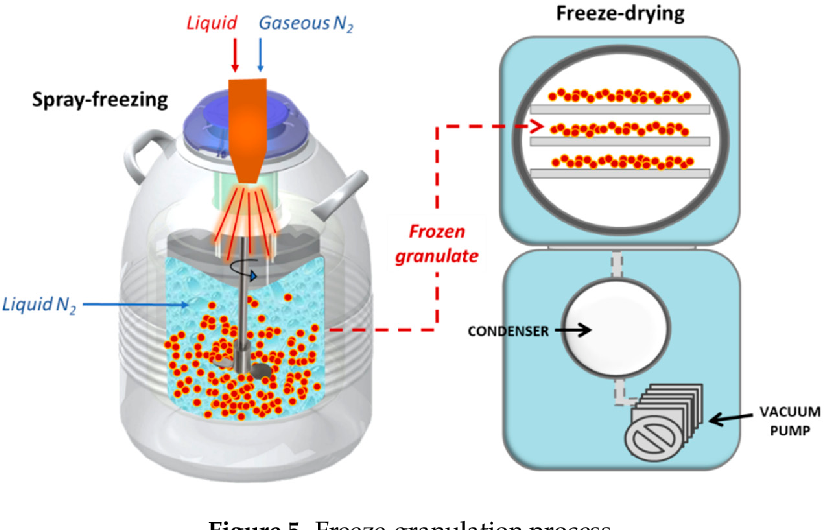 Frost-resistant plants have adaptations that reduce cell dehydration. With a decrease in temperature, such plants show an increase in the content of sugars and other substances that protect tissues (cryoprotectors), these are primarily hydrophilic proteins, mono- and oligosaccharides; decrease in cell hydration; an increase in the amount of polar lipids and a decrease in the saturation of their fatty acid residues; an increase in the number of protective proteins. nine0038 The degree of frost resistance of plants is greatly influenced by sugars, growth regulators and other substances formed in cells. In overwintering plants, sugars accumulate in the cytoplasm, and the starch content decreases. The influence of sugars on increasing the frost resistance of plants is multifaceted. The accumulation of sugars prevents freezing of a large volume of intracellular water, significantly reduces the amount of ice formed.
Frost-resistant plants have adaptations that reduce cell dehydration. With a decrease in temperature, such plants show an increase in the content of sugars and other substances that protect tissues (cryoprotectors), these are primarily hydrophilic proteins, mono- and oligosaccharides; decrease in cell hydration; an increase in the amount of polar lipids and a decrease in the saturation of their fatty acid residues; an increase in the number of protective proteins. nine0038 The degree of frost resistance of plants is greatly influenced by sugars, growth regulators and other substances formed in cells. In overwintering plants, sugars accumulate in the cytoplasm, and the starch content decreases. The influence of sugars on increasing the frost resistance of plants is multifaceted. The accumulation of sugars prevents freezing of a large volume of intracellular water, significantly reduces the amount of ice formed.
Sugars protect protein compounds from coagulation during freezing; they form hydrophilic bonds with cytoplasmic proteins, protecting them from possible denaturation, increase osmotic pressure and reduce the freezing point of the cytosol. As a result of the accumulation of sugars, the content of strongly bound water increases, while that of free water decreases. Of particular importance is the protective effect of sugars on proteins concentrated in the surface membranes of the cell. Sugars increase the water-retaining capacity of the colloids of the cell protoplasm; the water associated with colloids in the form of hydration shells of biopolymers at low temperatures does not freeze and is not transported, remaining in the cell. nine0038 Cryoprotectors are also hemicellulose molecules (xylans, arabinoxylans) secreted by the cytoplasm into the cell wall, enveloping growing ice crystals, which prevents the formation of large crystals that damage the cell. So the cells are protected both from intracellular ice and from excessive dehydration. A significant amount of protective proteins and modifications of lipid molecules increase the structure of cells. In most plants, the synthesis of water-soluble proteins increases. nine0038 Protein substances, being partially hydrolyzed, increase the content of free amino acids.
As a result of the accumulation of sugars, the content of strongly bound water increases, while that of free water decreases. Of particular importance is the protective effect of sugars on proteins concentrated in the surface membranes of the cell. Sugars increase the water-retaining capacity of the colloids of the cell protoplasm; the water associated with colloids in the form of hydration shells of biopolymers at low temperatures does not freeze and is not transported, remaining in the cell. nine0038 Cryoprotectors are also hemicellulose molecules (xylans, arabinoxylans) secreted by the cytoplasm into the cell wall, enveloping growing ice crystals, which prevents the formation of large crystals that damage the cell. So the cells are protected both from intracellular ice and from excessive dehydration. A significant amount of protective proteins and modifications of lipid molecules increase the structure of cells. In most plants, the synthesis of water-soluble proteins increases. nine0038 Protein substances, being partially hydrolyzed, increase the content of free amino acids. In the tissues of frost-resistant plants at the end of summer and autumn, reserve substances accumulate in sufficient quantities (primarily sugars), which are used in the spring when growth resumes, providing the plants with building material and energy needs.
In the tissues of frost-resistant plants at the end of summer and autumn, reserve substances accumulate in sufficient quantities (primarily sugars), which are used in the spring when growth resumes, providing the plants with building material and energy needs.
Ways to increase the frost resistance of plants
The basis for solving this problem is the selection of frost-resistant plant varieties that are well adapted to the climatic conditions of the region. The hardening process is a temporary adaptation of the cytoplasm, which determines the degree of resistance to subsequent damage by low temperatures. Frost resistance is formed in accordance with the genotype in the process of ontogenesis under the influence of certain environmental conditions and is associated with the onset of a dormant period, its depth and duration. nine0038 Agrotechnics of a particular plant species (time and method of sowing, etc.) should maximally contribute to the formation in the process of hardening of the implementation of a possible genetically determined frost resistance of a variety.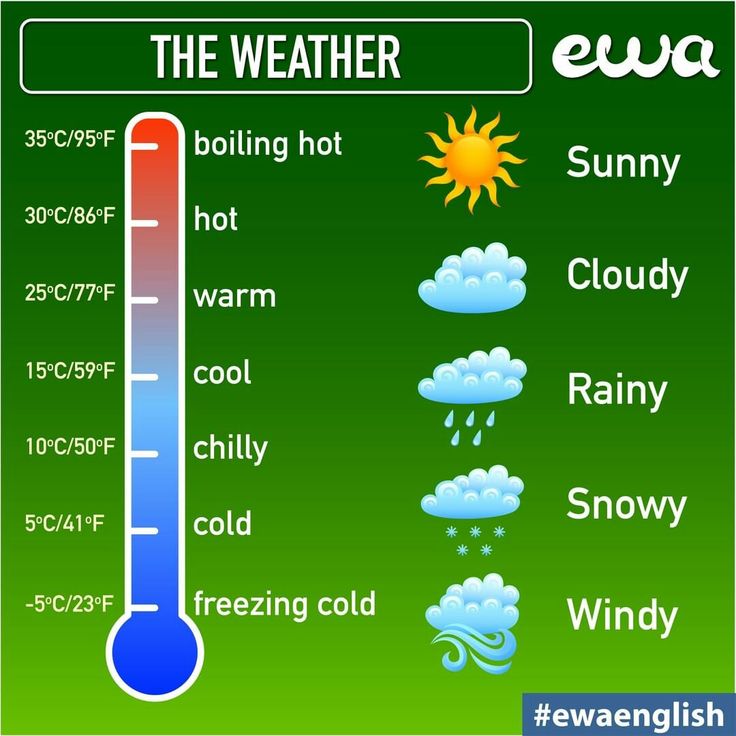 In the northern and central regions with unstable spring and frequent return of spring frosts, varieties of winter breads and perennial fruit crops with deeper winter dormancy, with a late resumption of spring vegetation (VVV) are more stable and productive. On the contrary, in areas with a steady increase in positive temperatures in spring, early-vegetating plant species and varieties have an advantage. nine0038 The frost resistance of winter wheat varieties is determined not only by the amount of sugars accumulated since autumn, but also by their economical use during the winter. In plants of winter-hardy varieties of winter wheat, in winter, with a decrease in temperature, the content of monosaccharides (glucose, fructose) increases due to the breakdown of sucrose into glucose and fructose, which lowers the freezing point of cell sap. The tillering node of cereals, the root neck of legumes are a kind of pantry of the plant's energy resources in winter and the organ of shoot formation in spring.
In the northern and central regions with unstable spring and frequent return of spring frosts, varieties of winter breads and perennial fruit crops with deeper winter dormancy, with a late resumption of spring vegetation (VVV) are more stable and productive. On the contrary, in areas with a steady increase in positive temperatures in spring, early-vegetating plant species and varieties have an advantage. nine0038 The frost resistance of winter wheat varieties is determined not only by the amount of sugars accumulated since autumn, but also by their economical use during the winter. In plants of winter-hardy varieties of winter wheat, in winter, with a decrease in temperature, the content of monosaccharides (glucose, fructose) increases due to the breakdown of sucrose into glucose and fructose, which lowers the freezing point of cell sap. The tillering node of cereals, the root neck of legumes are a kind of pantry of the plant's energy resources in winter and the organ of shoot formation in spring.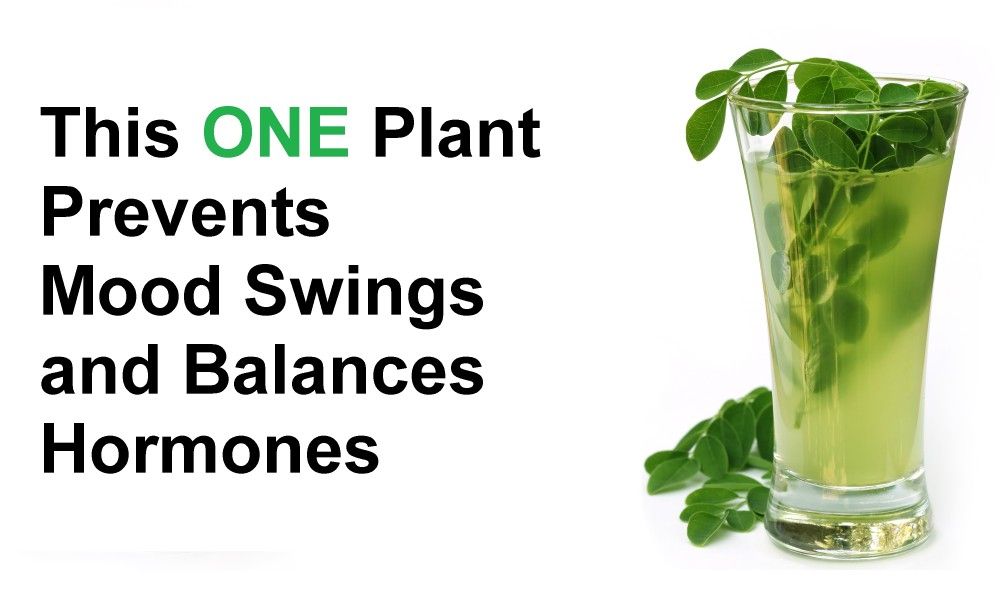 nine0038 Frost resistance of winter wheat plants positively correlates with sugar content in tillering nodes. In good crops of winter wheat in leaves in December, the content of soluble carbohydrates reaches 18-24% (on dry matter), and in tillering nodes - 39-42%. Plants that lay deep tillering nodes (3-4 cm) are usually more frost-resistant than those whose tillering nodes are close to the surface (1-2 cm). The depth of the tillering node and the power of its development depend on the quality of the seeds, the method of sowing, and tillage. nine0038 Fertilizers and plant frost resistance
nine0038 Frost resistance of winter wheat plants positively correlates with sugar content in tillering nodes. In good crops of winter wheat in leaves in December, the content of soluble carbohydrates reaches 18-24% (on dry matter), and in tillering nodes - 39-42%. Plants that lay deep tillering nodes (3-4 cm) are usually more frost-resistant than those whose tillering nodes are close to the surface (1-2 cm). The depth of the tillering node and the power of its development depend on the quality of the seeds, the method of sowing, and tillage. nine0038 Fertilizers and plant frost resistance
Frost resistance is significantly affected by soil nutrition conditions, especially in autumn. The resistance of plants to frost increases on constantly limed soils when winter potassium-phosphorus fertilizers are applied for sowing, while excess nitrogen fertilizers, facilitating growth processes, make winter plants more sensitive to frost.
One of the strategies for growing winter crops should be proper nitrogen management: before and during the frost period, nitrogen fertilization should be avoided. nine0038 Potassium fertilizers have a positive effect on the frost resistance of plants. They affect the metabolism of carbohydrates, helping to increase the sugars in the plant. Potassium also affects the water exchange in the plant and the passage of the process of photosynthesis.
nine0038 Potassium fertilizers have a positive effect on the frost resistance of plants. They affect the metabolism of carbohydrates, helping to increase the sugars in the plant. Potassium also affects the water exchange in the plant and the passage of the process of photosynthesis.
Phosphorus influences cell division and therefore helps the plant recover from stress.
Microelements (cobalt, zinc, molybdenum, copper, vanadium, etc.) have a positive effect on frost resistance, as well as on the cold resistance of plants. For example, zinc increases the content of bound water, enhances the accumulation of sugars, molybdenum contributes to an increase in the content of total and protein nitrogen. Micronutrient preparations can be applied to seeds before sowing. nine0038 The formation of ice in the buds and leaves of plants depends to a large extent on the presence of small particles that act as crystallization nuclei. Spraying plants with copper reduces the number of bacteria that can act as crystallization nuclei, thus helping to increase the frost resistance of plants.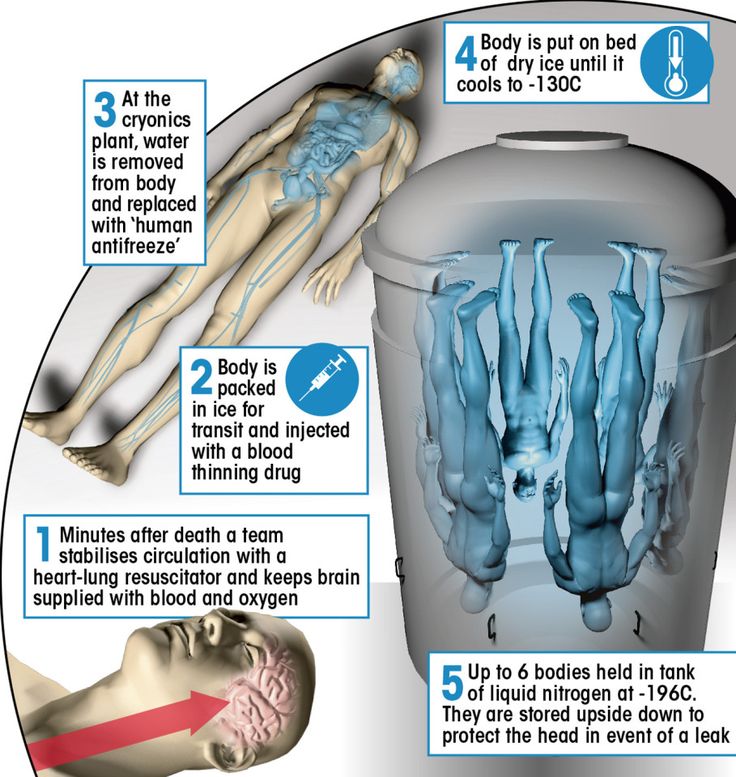
Also, to increase the frost resistance of winter crops, antitranspirants are used - substances that envelop the leaves with a semipermeable membrane and reduce the level of transpiration. They are applied to the leaves 24 hours before the expected change in weather conditions, and then repeated treatments are carried out every 2-4 weeks, depending on the conditions. nine0038 Algae extracts are also considered as preparations that increase the frost resistance of plants. Their periodic application helps the plant to some extent prevent the negative effects of low temperatures. Algae extracts contain a large number of plant growth regulators, two of which (cytokinins and betaines) increase cell wall turgor. They also contain sugars (mannitol) and potassium, both of which lower the freezing point of protoplasm.
Microbial preparations are also effective in increasing the frost resistance of plants. The microbio-plant community is created as a result of pre-sowing treatment of seeds of winter crops and early treatment of their seedlings.

